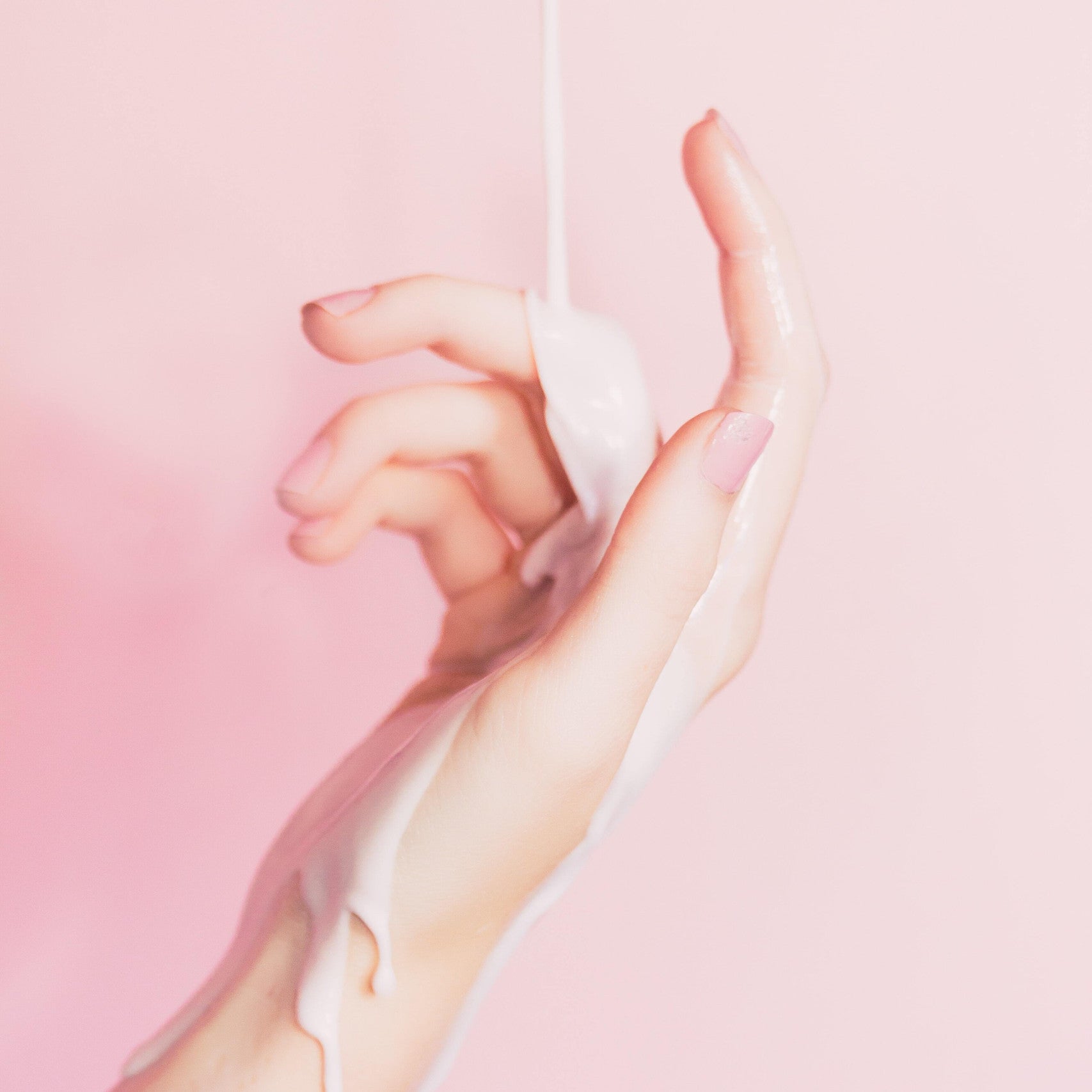Let's talk about something that is completely normal, but still a taboo subject in our society: vaginal discharge and how it can change the color of our panties.
Overview
1. Discharge during cycle phases

First of all, it is important to understand that discharge is a completely normal and important part of the cycle . Every person with a vagina is familiar with the odorless, milky-white secretion (leucorrhea) that flows from the vagina every day. This discharge ( called fluor vaginalis or fluor genitalis ) first appears a few years before puberty and accompanies women until menopause.
Depending on which phase of the cycle a woman is in, the discharge changes in consistency and quantity. For example, many women notice that they are ovulating because of an increased, almost liquid discharge caused by the female hormone estrogen. Shortly before and after menstruation, vaginal discharge is a little more viscous.
2. That's why discharge is important
The discharge from the vagina has a purpose: it frees the uterus and vagina of excess mucus and sloughed cells. At the same time, the vaginal discharge contains many lactic acid bacteria , which create a slightly acidic vaginal environment and thus ward off intruders such as fungi, viruses and bacteria. The discharge also prevents sperm from entering the uterus when it is not prepared for pregnancy due to the cycle.
It is normal to notice different types of vaginal discharge during your menstrual cycle - it changes in appearance, consistency and amount over the course of the cycle due to hormones .
Vaginal discharge also changes when you are aroused and during and after pregnancy. However, significant or sudden changes in the smell, color, or consistency of your discharge may indicate another cause, such as an infection that requires treatment.
3. Discharge during pregnancy

If heavy discharge occurs during pregnancy, many women are unsettled. However, there is usually no reason for this, as heavy discharge in pregnant women is normal . It is the same discharge that non-pregnant women experience every day: white discharge. The amount and consistency of the discharge can vary depending on the menstrual phase, but it is usually clear or white and has a mild, not too unpleasant smell .
White discharge is similar to the discharge you might have between your periods, only heavier.
As your pregnancy progresses, you'll likely experience more white discharge. This is a sign that your body is preparing for labor .
You may also notice that you have more discharge than usual during pregnancy. This is because the pregnancy hormone estrogen stimulates blood flow to the vagina , which also increases discharge.
4. Your vagina is acidic
And now it gets interesting. Your discharge can bleach your underwear! How does that work? It's all about the pH value on a scale of 0 to 14. 7 is the happy medium, everything below is acidic and everything above is called basic/alkaline. Our vagina prefers acid! Its pH value is normally between 3.8 and 4.4 and, together with good bacteria, ensures that the optimal acidity of the vagina is maintained. When the acidic discharge comes into contact with our clothes, it can bleach them and is a sign of our discharge super-cleaning power ! So light stains in your underwear are not only not bad, they are good! That means that your vagina and its protection are working perfectly.
5. How to prevent stains
The easiest way to protect your underwear is to use panty liners . These catch the cervical mucus and prevent it from coming into contact with your underwear. If you are worried about your most beautiful piece. However, panty liners are not the most environmentally friendly or breathable choice . This is where discharge underwear comes in. Briefs that have been specially developed to catch your daily discharge and protect you from unpleasant moisture in your panties. Together with customers, we have developed underwear that is extra soft and quick-drying: Daysics® . They are as absorbent as 2 panty liners, without feeling wet or cold and made of extra soft organic cotton .
So let it run and maybe be a little less annoyed next time when you take bleached underwear out of the laundry - your pH value will thank you!




































